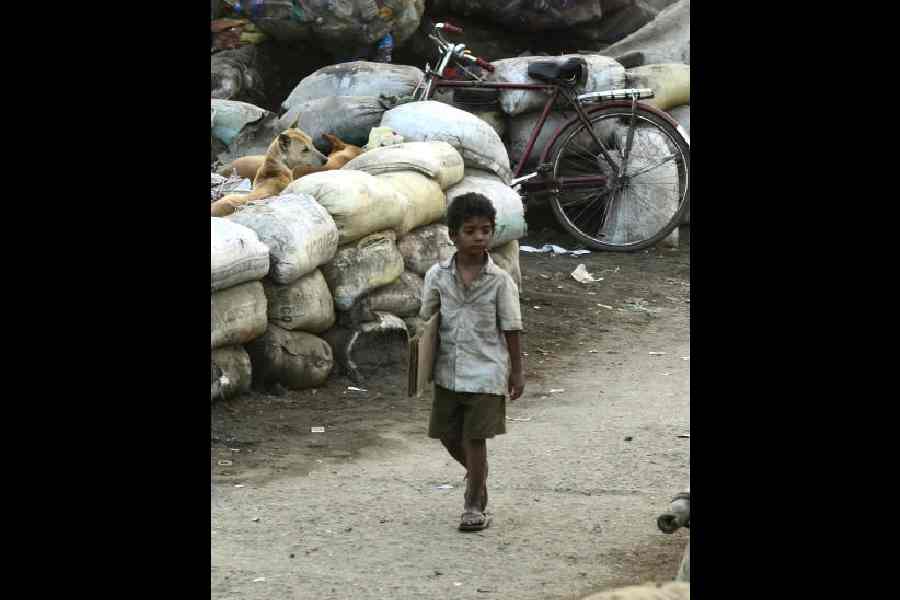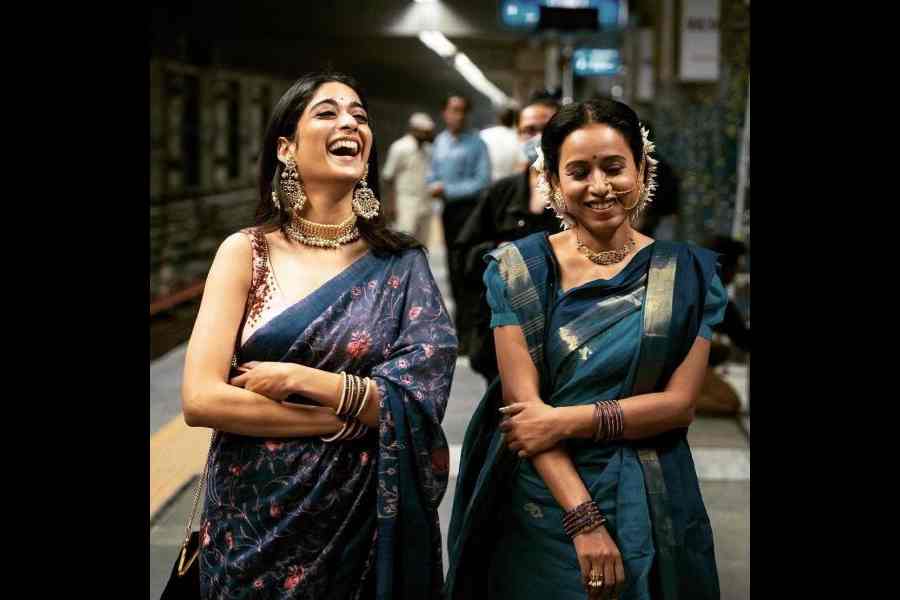Lion is an autobiographical movie adapted from a book named A Long Way Home by Saroo Brierley. Directed by Garth Davis, it is a heart-touching real-life story about a young boy lost in Calcutta. Unable to speak or comprehend Bengali, he is unable to tell anyone where he is from. He has a narrow escape from traffickers and is finally put in an adoption centre in Howrah. From there, he is luckily adopted by an Australian couple who turn his life around.
The story is gripping and exciting and it is befitting that it has Calcutta with its massive influx of humanity, along with Howrah Station, as its backdrop. The city becomes a character with its threats, temptations and promises and it is from its unsafe environment that Saroo is rescued and relocated.
An Australian film, Lion earned several Oscar nominations and also won a tidy number of BAFTA Awards. That it is a true story brings us back to the old adage ‘Truth is stranger than fiction.’ (Pick your favourite made-in-Calcutta film/series in the last five years... September 11)

Sunny Pawar shooting Lion in Howrah Picture: The Telegraph
Pampa Paul
Of the recent made-in-Calcutta films/series, Ami O Manohar (2018) features at the top of my list. Perhaps this is not the best visually coherent film, for it is shot mostly on an iPhone, exuding a documentary feel in obsidian black, pallid whites and a hundred shades of grey in between. Director Amitabha Chaterji’s succinct and enchanting urban narrative dexterously depicts Calcutta’s quintessential culture and the reality of the city’s streets with a spontaneity that ekes out a spatial propinquity between the audience and the action. It brews a slow-burn romance between two loners in the modern-day city accented with profound moments of silence as the two ‘strangers’ stroll together, cutting through Calcutta’s cacophony.
The movie efficiently manoeuvres the city through bustling sidewalks and meandering trolley rides, creating a tactile feel for the discreet layers of Calcutta. The City of Joy is celebrated through an extraordinary quill of the camera that writes the prose of the outdoor cinematography, succumbing to the mystic poetry of the indoors. The noir-like setting, with a number of sequences shot at night, uncloaks a spectral side of the city, flanked by solitude and melancholy.
Ami O Manohar breathes life into the urban ordinariness of Calcutta and cherishes it as a telltale raconteur from whom the characters become inseparable, leaving the audience enamoured with its iconographic cityscape.
Camellia Paul
Being a sucker (pun intended) for vampire films and series, I was thrilled to learn about Tooth Pari: When Love Bites (2023), set in my very own Calcutta! From the classic vampire-human romance to a humane portrayal of vampire characters, the series checks all the right boxes in the genre. The plot customarily recycles some familiar ideas from Dracula, The Vampire Diaries and other canonical sources, showcasing stellar performances by Tanya Maniktala (as Rumi, the vampire protagonist), Shantanu Maheshwari (as Doc Roy, the young dentist and human protagonist), Tillotama Shome (as Meera, a sophisticated courtesan vampire), Saswata Chatterjee (as David, a very cool vampire), Sikander Kher (as Kartik, a macho cop) and others.
In the decadent backdrop of Calcutta backstreets, vampires are shown to have withdrawn into an underground hideout, surviving on packaged blood supplied by their human boss AD (Adil Hussain) and forbidden to venture outside. Rumi, who embodies a feminist spirit of liberation, is the leader of a sub-group of female vampires called the Baghinis, that is, Tigresses, who secretly venture out to practise a true vampire lifestyle. This is an example of how Bengali cultural codes (like the Bengal tiger) are deployed to portray the so-called ‘monstrosity’ of vampirism in a positive light. Rumi’s backstory indicates that she was victimised and driven to suicide by a patriarchal society, and turning into a vampire also turned her into a strong woman. At one important juncture, when the first and only killing in the series is shown, Rumi is compared to the goddess Kali, with fangs bared and eyes blazing, clad in a white sari to underscore her Bengali-ness! This is a unique contribution that Tooth Pari makes to the vampire discourse at large. Moreover, a flashback makes a riveting reference to the Naxal movement when blood flowed freely in the city’s streets.
The Bengali ambience and language are used to great effect in general (except for Adil Hussain’s stilted Hindi pronunciation, which I found objectionable), such as in coining the term ‘Cutmundus’ (head-cutters) for a secret cult of vampire-killers. Doc Roy and Kartik, interestingly, represent two opposite poles of Bengali masculinity, another critical point in vampire narratives. I couldn’t help wondering: can the menacing witch Luna Luka (charismatically played by Revathy), the leader of the Cutmundus, stand for a not-so-covert reference to the Wiccan community, which has prominent Calcuttan proponents?
I have questions galore, but all in all, Tooth Pari is a one-of-a-kind series as far as Calcutta is concerned. I can’t wait for Season 2, and any subsequent Bengal-based vampire ventures it might possibly inspire!
Dhee Sankar
My favourite made-in Calcutta film is definitely Kahaani even though it was made more than five years ago. Kahaani was a game-changer in many ways. First, it stayed away from the stereotypical Bollywood portrayal of Calcutta (read Howrah Bridge-Victoria Memorial-Maidan-trams), and showed the city in all the murky glory of its dangerous alleys and bylanes. Kahaani was set in a nondescript South Calcutta locality which a Calcuttan very casually passes by. It tried its best to keep up the ordinariness, both in its place and plot, which made the climax even more enjoyable. Second, it not only established Vidya Balan as an A-list actress capable of carrying a movie on her shoulders minus a male star, but it also paved the way for movies like English Vinglish and Tanu Weds Manu... unconventional films led solely by a heroine. Finally, in the scheme of all things Bollywood, where good, no-nonsense thrillers are few and far between, the mid-budget Sujoy Ghosh production with no flashy song-and-dance sequences and a bunch of new faces was like a breath of fresh air, almost reminiscent of Ram Gopal Varma’s Satya.
Roshni Ojha
My favourite made-in-Calcutta film in the last five years is Pavel’s 2018 Bengali film Rosogolla. In the period piece starring Ujaan Ganguly and Abantika Biswas in the lead roles, the filmmaker told the audiences the life story of Nabin Chandra Das, the legendary figure in the world of Bengali confectionery. It showed how a young Nabin Chandra innovated Bengalis’ most beloved sweetmeat in the 1860s in the city, thus scripting history.
Sourish Misra











